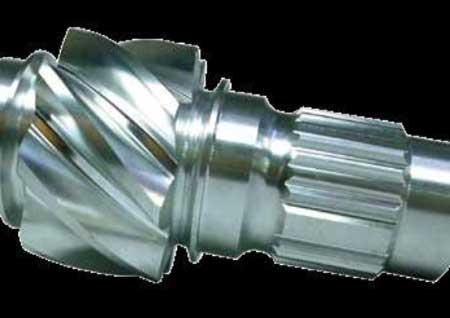|
COMPUTER Aided Design (CAD) and Computer Aided Manufacturing (CAM), somewhat surprisingly, still struggle to find their place in New Zealand’s engineering community, and their combined role is not as well understood as it should be.
This is the view of Prosoft’s managing director Roy Parlane.
Engineers generally understand drawing, design and modelling – the elements of CAD – he says. “But CAM is a different matter, with the collective power of both often missed or, at best, compromised.
“Recognition needs to be given to the role and interface ability of both CAD and CAM,” he adds. “In a pure design case, less importance may be credited to CAM; however it should not be entirely overlooked. A good understanding of the role of CAM following the design process has the ability to enhance business opportunities – for example, providing models in the format that the CAM user can easily accept and/or modify will significantly help reduce the time to process the file for machine part manufacture.
CAM is often best served by CAD providing clean drawing or model files that have no construction lines left in the file and/or where layers are clearly defined or removed, says Parlane. “The key is to leave a clean solid file which can then be easily imported, allowing manufacturing strategies to be quickly applied.
“One alternative is to have a package that can seamlessly interface with that of the CAD product. A good understanding of the application limits is required when evaluating this option.”
When purchasing CAD/CAM software, due diligence in these matters is imperative if companies want to avoid under-performing outcomes. Parlane says often the problem is that the purchase exercise is given dominance over the implementation process.
“The implementation process for CAD/CAM has been traditionally undervalued and, in the case of CAM, it can be extremely disadvantageous to good outcomes for the company involved.
“It should be noted that the more significant impacts of success and profitability rest heavily on the CAM function, not CAD. In other words, it’s very easy and less expensive to create a new model or drawing than to remanufacture a part.
“In many cases at engineering shop level, engineers and middle management approach the software purchase individually. This results in little or no consideration of how the two (CAD and CAM) might best be interfaced to capture the maximum synergies. A more planned approach is paramount.”
Parlane says CAD/CAM software should not be seen as an ‘add on’ to the business – but the very foundation. As such, it’s important to keep up to date with any new software developments. “Until this is truly recognised the company will always have difficulty in moving forward.”
Do it once, do it right
Parlane’s advice to engineering companies is to carry out proper research through accredited sources to truly assess the suitability and sustainability of any potential CAD/CAM software.
“Do it once and do it right. I have seen on far too many occasions companies purchasing new replacement software and/or running multiple packages based on personal preference rather than the synergy consideration of company and staff.
“Understand the value of a proper maintenance program. Learn from the poor purchase decision made in the first instance.”
Get it wrong, he says, and you’ll almost inevitably incur a negative impact on your bottom line. “One that might not be so clearly obvious in the immediate term.”
Parlane says we can look to Australia for inspiration. “There I have noticed on many occasions that the evaluation process and purchase recommendation are made by the professional engineers within an organisation.
“In New Zealand financial professionals allocate budget and make final decisions often without the engineer’s consideration being taken into full account. Pressure is often exerted upon the engineer to accept the lower priced option, making for a compromise in performance.
|
“I believe there is an engagement gap between the roles of financial managers and engineers, with overriding consideration being placed on the initial investment cost rather than performance and longer term sustainability.”
One issue creating real concern for Parlane right now is “the fact that industry and educators are not working cohesively in the way they go about training young student engineers in CAD/CAM.
“There’s little recognition of today’s learning programs – programs developed and maintained to world standards and being denied to our new student trainee engineers due to the lack of understanding of the speed of technology by those in control of education.”
Prosoft is currently seeking a strategic partner to become a ‘certified provider’for the delivery of MastercamU (Mastercam University) online CAD/CAM training courses to the student, engineering and manufacturing sectors.
Parlane says there is a real need to provide a sustainable uniform nationwide standard of CAD/CAM training which not only meets the needs of New Zealand industry, but is also recognized globally.
“One that is proven, used internationally globally and linked to technology partners who drive its continued advancement.”
•EMAIL: roy@prosoft.co.nz
|






